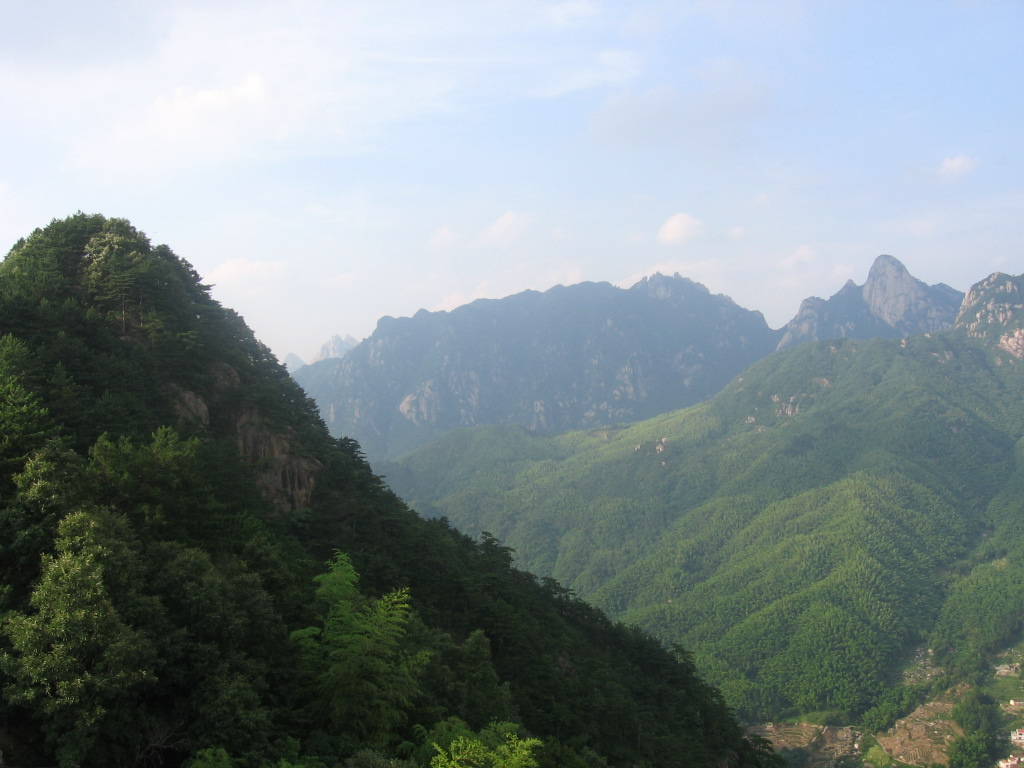The Online Archive of California includes a nineteenth-century lithograph entitled “Hermit and the Burnt Tree” by Swiss artist C. C. Kuchel, which depicts the small figure of a man sitting before a great redwood. URL at: http://ark.cdlib.org/ark:/13030/tf067nb32k/.
Coptic anchorites
In the eremitic tradition of Coptic Christianity, hermits are known as anchorites. Their obscurity in the Western world is due in part to the irregular status of Copts versus the major Christian denominations, the scarcity of translations, and the exoticism of geography and culture.
A sense of these characteristics can be found in a book by the Coptic prelate Pope Shenouda III entitled “What is an Anchorite?” translated and posted on the Coptic Hymns web site. The page is part of the larger section on Coptic spirituality that includes stories about desert saints and hermits. Brought to our attention by a friend of Hermitary.
URL: http://www.coptichymns.net/index.php?module=library&
tid=1&filter=category:eq:23&pubcnt=100.
Zumthor’s chapel for Swiss hermit
The German-Swiss architect Peter Zumthor has created the “Field Chapel” dedicated to Brother Klaus or Nicholaus of Flue, the early modern Swiss hermit and visionary. An article from the Guardian entitled “Solitary Refinement” by Jonathan Glancey describes the chapel:
The apparently simple form of Zumthor’s building proves to be far richer than it first appears. The concrete has been poured by Herr Scheidtweiler, family and friends, over a wigwam-like timber frame. Once the concrete had set, this frame was set on fire, creating walls inside the chapel that are strangely blackened and haunted with the ghosts of the timbers that once supported them. The floor is a frozen pool of molten lead, while the roof is open to the sky and, by night, the field of stars above. Rain and sunlight tumble and fall through this oculus to create atmospheric patterns of shade and glistening weather.
Zumthor’s chapel is numinously dark inside, but when you look up, the oculus itself resembles the flare of a star – a reference, presumably, to Brother Klaus’s vision in the womb. Being here alone is close to feeling, if not understanding, the faith that sustained the Swiss hermit.
So, here is a building containing just one room, with a roof that fails to keep out the rain, made of rough concrete, burned timber and lead. It has no electricity. No running water. No plumbing. No lavatories. No wind turbine. No solar panels. No air-con. No pictures hang on its walls. It offers no obvious, or accepted, sense of comfort. And yet it is compelling and very beautiful, offering solace.
URL: http://arts.guardian.co.uk/art/architecture/story/0,,2100148,00.html
Frank Bottomley: Yorkshire hermits
Frank Bottomley is a medieval and local historian concentrating on Yorkshire, England. His monograph “Yorkshire’s Spiritual Athletes: Hermits & Other Solitaries” is a wonderful resource which he makes available free at his website. (The text appears complete in the main link, but the appendices only include one of several projected items in the table of contents.) The work extends the detail of venerable predecessors like Rotha Mary Clay’s Hermits and Anchorites of England.
URL: http://dryfish.org.uk/~medieval/
and main text directly at http://www.zurgy.org/medieval/hermits.pdf
Rauch on introversion
Thanks to a member of the Hermitary forum for pointing out a series of articles on introversion by writer Jonathan Rausch in the Atlantic Monthly. The title of the original March 2003 article is “Caring for Your Introvert: The Habits and Needs of a Little-understood Group” and drew more hits to the Atlantic website than any previous article. The article is short and addresses the basics, arguing that extroverts simply don’t understand what it is like to be an introvert. URL: http://www.theatlantic.com/doc/200303/rauch
Rauch was interviewed in the February 2006 issue of the magazine, under the title “Introverts of the World, Unite!” URL: http://www.theatlantic.com/doc/200602u/introverts. And in an April 2006 column titled “The Introversy Continues,” Rauch responded to reader feedback. URL: http://www.theatlantic.com/doc/200604u/introversy
